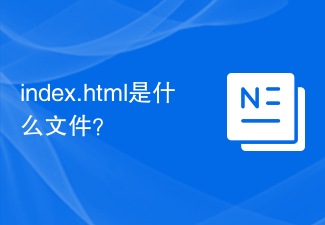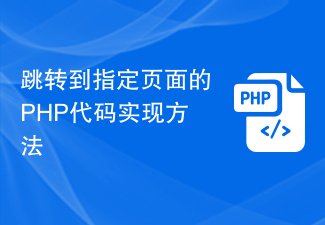
我们可以通过使用带有“http-equiv”属性的“meta”标签,或者使用setInterval()浏览器API来自动刷新网页。自动刷新网站有一定的用例,例如,在创建天气查找 Web 应用程序时,我们可能希望在设定的时间间隔后刷新我们的网站,以便向用户显示某个位置近乎准确的天气数据。
让我们看看下面的两种方法,了解如何设置自动刷新网站。
方法 1
在这种方法中,我们将使用“meta”标签的“http-equiv”属性在“content”属性中传递的特定时间间隔后刷新我们的Web应用程序。 HTML5规范中默认为我们提供了meta标签。
语法
<meta http-equiv="refresh" content="n">
这里的“n”为正整数,表示刷新页面的秒数。
示例
在此示例中,我们将使用“meta”标记的“http-equiv”属性每 2 秒刷新一次我们的 Web 应用程序。
<!DOCTYPE html> <html lang="en"> <head> <title>How to Automatic Refresh a web page in fixed time?</title> <meta http-equiv="refresh" content="2"> </head> <body> <h3 id="How-nbsp-to-nbsp-Automatic-nbsp-Refresh-nbsp-a-nbsp-web-nbsp-page-nbsp-in-nbsp-fixed-nbsp-time">How to Automatic Refresh a web page in fixed time?</h3> </body> </html>
方法2
在这种方法中,我们将使用浏览器提供给我们的“setInterval()”API,它允许我们在每隔一定时间后运行一段代码,这两者都作为参数传递到浏览器 API。
语法
setInterval(callback_fn, time_in_ms)
“setInterval()”有2个参数,第一个是延迟后触发的回调函数,第二个是以毫秒为单位提供的延迟。
示例
在此示例中,我们将使用“setInterval()”浏览器 API 每 2 秒刷新一次我们的 Web 应用程序。
<!DOCTYPE html>
<html lang="en">
<head>
<title>How to Automatic Refresh a web page in fixed time?</title>
</head>
<body>
<h3 id="How-nbsp-to-nbsp-Automatic-nbsp-Refresh-nbsp-a-nbsp-web-nbsp-page-nbsp-in-nbsp-fixed-nbsp-time">How to Automatic Refresh a web page in fixed time?</h3>
<script>
window.onload = () => {
console.clear()
console.log('page loaded!');
setInterval(() => {
window.location = window.location.href;
}, 2000)
}
</script>
</body>
</html>结论
在本文中,我们学习了如何使用 HTML5 和 JavaScript 两种不同的方法在固定时间后自动刷新我们的 Web 应用程序。在第一种方法中,我们使用“meta”标签的“http-equiv”属性,在第二种方法中,我们使用“setInterval”浏览器API。
以上是如何定时自动刷新网页?的详细内容。更多信息请关注PHP中文网其他相关文章!
 index.html是什么文件?Feb 19, 2024 pm 01:36 PM
index.html是什么文件?Feb 19, 2024 pm 01:36 PMindex.html代表网页的首页文件,是网站的默认页面。当用户访问一个网站时,通常会首先加载index.html页面。HTML(HypertextMarkupLanguage)是一种用于创建网页的标记语言,index.html也是一种HTML文件。它包含网页的结构和内容,以及用于格式化和布局的标签和元素。下面是一个示例的index.html代码:<
 css怎么去掉a标签自带颜色Apr 25, 2024 pm 05:42 PM
css怎么去掉a标签自带颜色Apr 25, 2024 pm 05:42 PM要去除 a 标签自带颜色,可使用以下方法:使用 CSS 的 color 属性指定文本颜色。使用 CSS 的 link-color 属性指定链接颜色。使用 CSS 的 text-decoration 属性去除下划线和默认文本颜色。使用 CSS 的 hover 颜色属性更改鼠标悬停时的文本颜色。使用 CSS 的 visited 颜色属性更改已访问过的 a 标签的文本颜色。
 怎么用a标签跳转到另一个页面Sep 11, 2023 pm 04:01 PM
怎么用a标签跳转到另一个页面Sep 11, 2023 pm 04:01 PMa标签来创建超链接,然后通过a标签,可以将一个页面链接到另一个页面。详细介绍:要实现页面跳转,需要将目标页面的URL填写到href属性中,URL可以是相对路径,也可以是绝对路径,相对路径是相对于当前页面的路径,而绝对路径是完整的URL地址。
 3秒跳转页面实现方法:PHP编程指南Mar 25, 2024 am 10:42 AM
3秒跳转页面实现方法:PHP编程指南Mar 25, 2024 am 10:42 AM标题:3秒跳转页面实现方法:PHP编程指南在网页开发中,页面跳转是常见的操作,一般情况下我们使用HTML中的meta标签或者JavaScript的方法进行页面跳转。不过,在某些特定的情况下,我们需要在服务器端进行页面跳转。本文将介绍如何使用PHP编程实现一个在3秒内自动跳转到指定页面的功能,同时会给出具体的代码示例。PHP实现页面跳转的基本原理PHP是一种在
 跳转到指定页面的PHP代码实现方法Mar 07, 2024 pm 02:18 PM
跳转到指定页面的PHP代码实现方法Mar 07, 2024 pm 02:18 PM在编写网站或应用程序时,经常会遇到需要跳转到指定页面的需求。在PHP中,我们可以通过几种方法来实现页面跳转。下面我将为您演示三种常用的跳转方法,包括使用header()函数、使用JavaScript代码和使用meta标签。使用header()函数header()函数是PHP中用来发送原始的HTTP头部信息的函数,在实现页面跳转时可以结合使用该函数。下面是一个
 PHP网页中文乱码怎么办?一篇完整解决方案Mar 26, 2024 pm 03:27 PM
PHP网页中文乱码怎么办?一篇完整解决方案Mar 26, 2024 pm 03:27 PMPHP网页中文乱码问题是在网页显示中出现中文字符显示为乱码的情况,这种情况通常是由于编码不一致或者未设置字符集导致的。解决PHP网页中文乱码问题需要从多个方面入手,以下是一些常见的解决方案以及具体的代码示例。设置PHP文件编码:首先确保PHP文件本身的编码是UTF-8,可以在编辑器中设置保存时使用UTF-8编码,或者在PHP文件头部添加如下代码设置编码:&l
 a标签属性有哪些Nov 24, 2023 am 09:51 AM
a标签属性有哪些Nov 24, 2023 am 09:51 AMa标签属性有:1、href;2、target;3、rel;4、download;5、hreflang;6、type。详细介绍:1、href,定义链接的目标URL,这是“<a>“标签最常用的属性,它可以链接到网页的任何部分,如页面顶部、特定段落等;2、target,定义链接在哪里打开;3、rel,定义链接的关系,这个属性允许指定当前文档与链接文档之间的关系等等。
 jQuery小技巧:快速修改页面所有a标签的文本Feb 28, 2024 pm 09:06 PM
jQuery小技巧:快速修改页面所有a标签的文本Feb 28, 2024 pm 09:06 PM标题:jQuery小技巧:快速修改页面所有a标签的文本在网页开发中,我们经常需要对页面中的元素进行修改和操作。在使用jQuery时,有时候需要一次性修改页面中所有a标签的文本内容,这样可以节省时间和精力。下面将介绍如何使用jQuery快速修改页面所有a标签的文本,同时给出具体的代码示例。首先,我们需要引入jQuery库文件,确保在页面中引入了以下代码:<


热AI工具

Undresser.AI Undress
人工智能驱动的应用程序,用于创建逼真的裸体照片

AI Clothes Remover
用于从照片中去除衣服的在线人工智能工具。

Undress AI Tool
免费脱衣服图片

Clothoff.io
AI脱衣机

AI Hentai Generator
免费生成ai无尽的。

热门文章

热工具

禅工作室 13.0.1
功能强大的PHP集成开发环境

SublimeText3汉化版
中文版,非常好用

SublimeText3 Linux新版
SublimeText3 Linux最新版

记事本++7.3.1
好用且免费的代码编辑器

Dreamweaver CS6
视觉化网页开发工具






